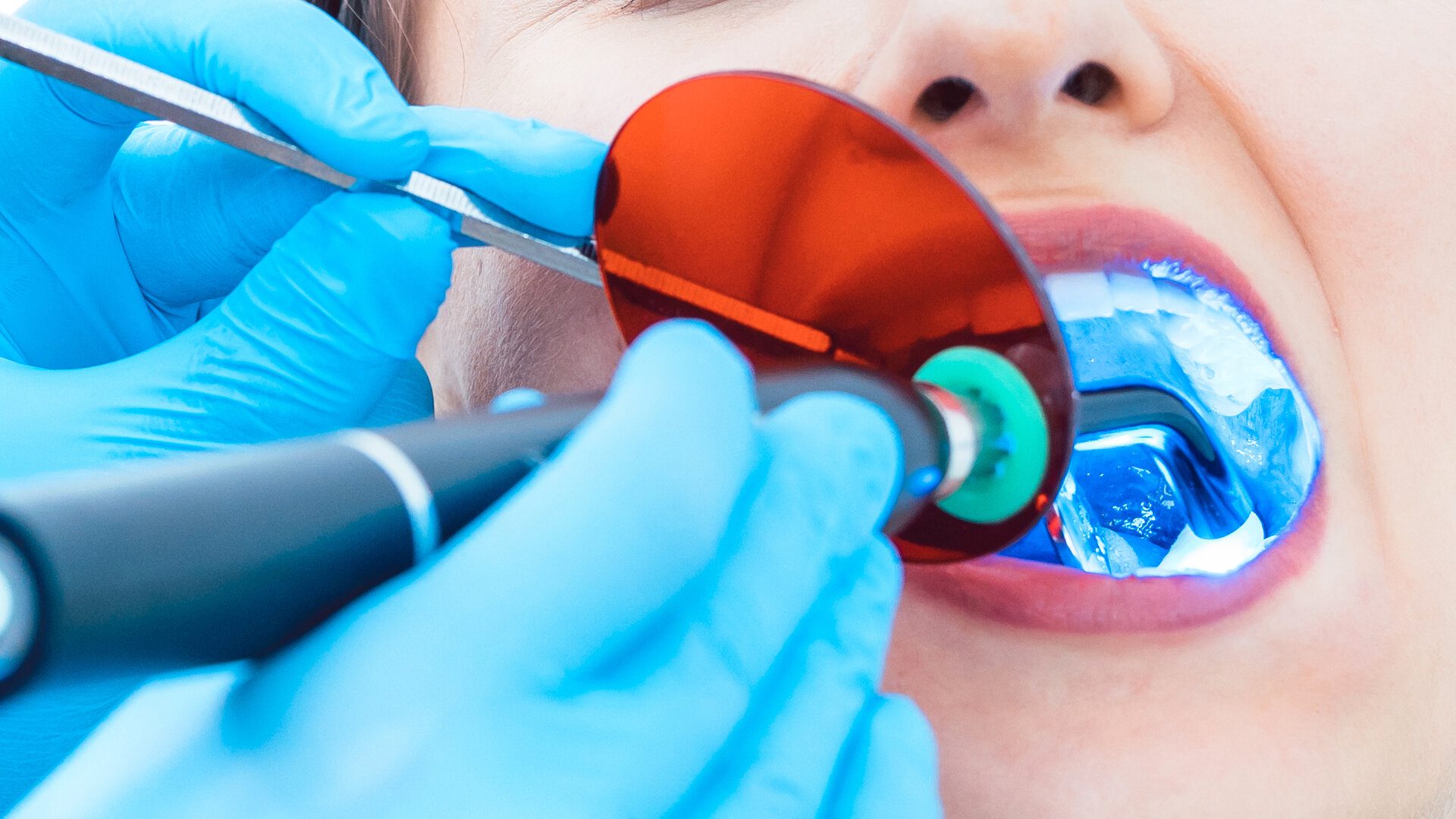Dental curing lights are essential tools in modern dentistry, used to harden resin-based materials during procedures like fillings and sealants. However, concerns have been raised about the potential dangers of these devices, particularly regarding eye and skin safety during extended exposure. In this comprehensive guide, we’ll dive deep into the science behind dental curing lights, examine the documented risks, and provide best practices for safe operation.
How Do Dental Curing Lights Work?
Dental curing lights emit high-intensity visible blue light to activate photoinitiators within light-cured dental compounds, triggering a photopolymerization process that hardens the material within seconds. Most modern units use light-emitting diodes (LEDs) and allow professionals to adjust optical power density and exposure duration for optimal results.
After activation, the resin typically hardens within 10-40 seconds, allowing for contouring and shaping before finishing and polishing procedures. The compact size of these units even enables portability during dental mission trips to underserved areas.
The Blue Light Debate: Assessing the Risks
The blue wavelength radiation emitted by dental curing lights has sparked significant debate around potential safety hazards. While most experts now agree that brief exposure during a typical procedure is likely not dangerous with proper safeguards, concerns persist about cumulative risks from routine exposure over a dental professional’s career.
Documented Effects on Eyes and Skin
Studies confirm that blue light dental curing is generally safe with brief, indirect exposure. However, risks can emerge under certain conditions:
Eyes
- Discomfort and pain from extended direct blue light exposure
- Increased likelihood of cataracts and macular degeneration over career lifespan
Skin
- Photoallergic reactions from resin compounds activated by blue light
- DNA damage and accelerated skin aging over time
It’s important to note that most issues arise when safety protocols are ignored, especially regarding eye shielding. Adhering to best practices is crucial for mitigating these risks.
Case Study: Silver Diamine Fluoride
Silver diamine fluoride (SDF) offers an excellent case study into both the benefits and potential hazards of dental curing lights. FDA-approved in 2014, SDF contains silver particles activated by blue light to halt tooth decay progression.
Benefits
- Minimally invasive application for decay control
- Effective for young children and patients with special needs
- Useful in low-resource settings without electricity
Considerations
- Tooth dark staining over time
- Tissue irritation if protocols not followed
While SDF expands access for vulnerable populations, improper curing light handling during application may increase safety risks. Always follow manufacturer guidelines to ensure safe and effective treatment.
Best Practices for Safe Dental Curing Light Use
To minimize the risks associated with dental curing lights, professionals should adhere to the following published safety recommendations:
- Wear protective eyewear with side panels and UV filters, changing them when filters expire.
- Limit direct blue light exposure through positioning, barriers, and procedure efficiency.
- Increase working distance between eyes and the curing light beam.
- Utilize lower curing modes when possible without compromising outcomes.
- Disinfect unit surfaces properly between patients per OSHA and CDC guidelines.
By following these basic protocols, dental professionals can significantly reduce any blue light-associated risks for themselves and their patients.
The Future of Dental Curing Light Safety
Dental curing technology continues to advance rapidly, with newer iterations addressing lingering safety concerns:
- Improved LED precision for lower overall energy output
- Built-in irradiance sensors and timers to prevent excessive exposure
- Optimized light spectra to reduce blue light hazard risks
As innovations focus on mitigating exposure, cumulative risks over long careers should continue to decline. However, individual diligence in adhering to best practices remains essential for ensuring a safe dental practice environment.
Frequently Asked Questions
Are dental curing lights safe for patients?
Yes, dental curing lights are generally safe for patients when used properly. Brief exposure during a typical procedure poses minimal risk, but dental professionals should always follow safety protocols to protect patients’ eyes and skin.
How can dental professionals protect their eyes from curing light damage?
Wearing protective eyewear with side panels and UV filters is crucial for shielding eyes from harmful blue light exposure. Positioning the curing light beam away from direct eye contact and increasing working distance can also help minimize risks.
Can dental curing lights cause skin damage?
Extended exposure to the blue light emitted by dental curing lights has been linked to photoallergic reactions, DNA damage, and accelerated skin aging. However, these risks are significantly reduced when proper safety protocols are followed, such as wearing protective clothing and limiting direct skin exposure.
What should I do if I experience eye discomfort after a dental procedure?
If you experience eye discomfort, pain, or vision changes after a dental procedure involving a curing light, contact your dentist immediately. They can assess any potential damage and recommend appropriate treatment. In most cases, symptoms are temporary and will resolve on their own, but it’s always best to err on the side of caution.
Conclusion: Prioritizing Safety in Dental Curing
Dental curing lights play a vital role in modern dentistry, enabling the efficient and effective treatment of patients with resin-based materials. While concerns about the dangers of blue light exposure are valid, the risks can be significantly mitigated by adhering to established safety protocols and best practices.
As technology continues to advance, we can expect even safer and more precise dental curing light options in the future. However, the responsibility ultimately lies with individual dental professionals to prioritize safety in their daily practice.
By staying informed about the latest research, following manufacturer guidelines, and maintaining a commitment to patient and provider well-being, the dental community can harness the power of these essential tools while minimizing any potential hazards. With a focus on safety at the forefront, dental curing lights will continue to shine brightly as indispensable assets in the quest for optimal oral health.



